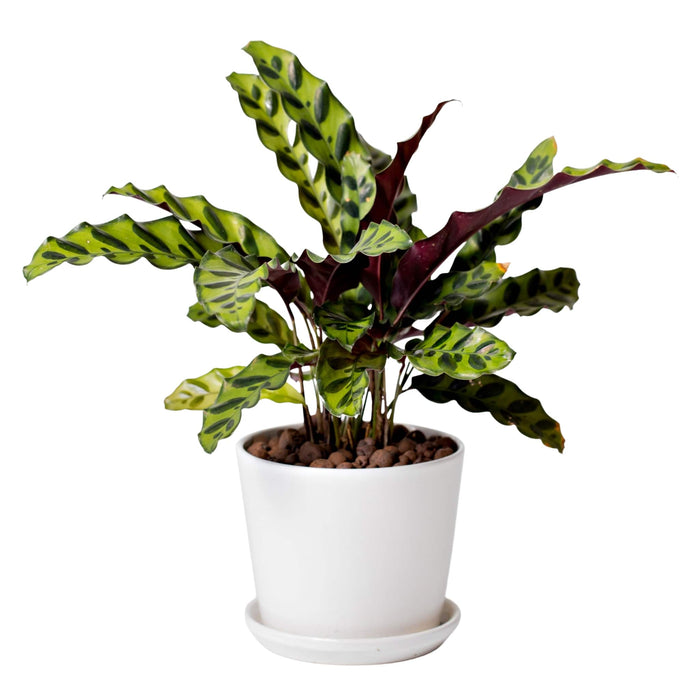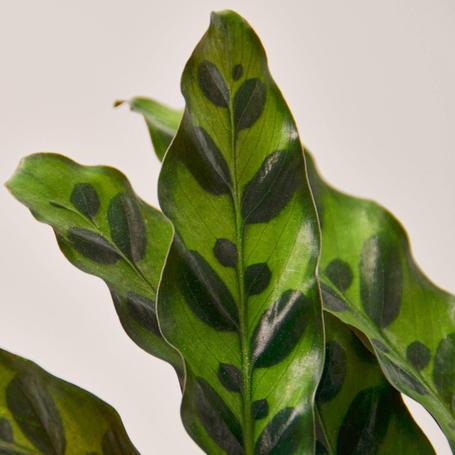
Calathea Lancifolia (Rattlesnake Plant)
- Description
- Plant Care
- More Information
- Disclaimer
-
This Calathea Lancifolia also commonly called the Rattlesnake comes with dark green leaves that have unique ripples. A darling of home gardeners for decades now, its popularity still tops the chart owing to its air-purifying and pet-friendly nature. It's a proud member of the prayer plant family and is a cousin to the stunning Calathea makoyana, the peacock plant, and many more stunners but comparatively very easy to take care of.
Like all Calathea plants, the leaves adjust as the sun rotates throughout the day. Calathea Plants, native to tropical South and Central America, Africa, and the West Indies, are grown primarily for their beautiful, brightly coloured, upright, oval leaves. Exhibits strappy, spotted leaves and deep purple undersides.
-
 Bright Indirect sunlight.
Bright Indirect sunlight. Avoid overwatering as the roots may get rot. However, to avoid fungal problems, try not to get water directly on the leaves or let it sit.
Avoid overwatering as the roots may get rot. However, to avoid fungal problems, try not to get water directly on the leaves or let it sit. A rich, peat-based potting soil with excellent drainage is beneficial.
A rich, peat-based potting soil with excellent drainage is beneficial. 15 - 35°C
15 - 35°C Feed with a weak liquid fertilizer throughout the growing season. Cut fertilizer back to once a month or so in the winter.
Feed with a weak liquid fertilizer throughout the growing season. Cut fertilizer back to once a month or so in the winter. -
Common Problems
1. Calathea leaves are turning brown
Under-watering and excessive use of fertilizer both can lead to the browning of leaves. Water your plant less frequently and reduce the amount of fertilizer you use if this problem occurs.
2. Why are new Calathea leaves lighter than the older ones?
If the new leaves of your Calathea are lighter green than the old ones, this is an indication of insufficient nitrogen or iron. Use a fertilizer rich in nitrogen and iron and increase the frequency of feeding the fertilizer.
3. Why are Calathea leaves yellowing?
Yellowing leaves are a sign of over-watering. If you notice yellow leaves, check the soil and roots. If the roots are too mushy, reduce the frequency of watering to avoid root rot.
-
The image shown is for reference purposes only. The actual product may vary in shape or appearance based on climate, age, height, etc. Plants will be delivered in plastic pots unless different Pot options are explicitly selected by the customer.
All information here is provided in good faith, however, we make no representation or warranty of any kind, express or implied, regarding the accuracy, adequacy, validity, reliability, availability or completeness of any information on the site.

